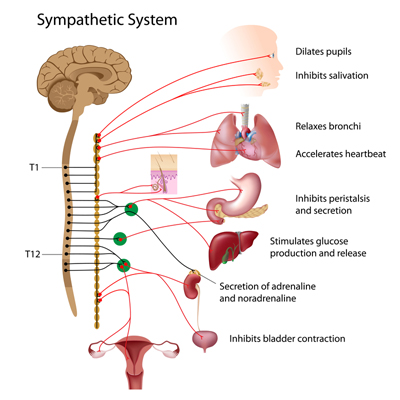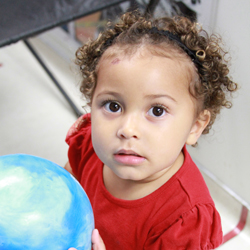About Neuroblastoma
 Neuroblastoma accounts for 3.8% of all childhood cancer diagnoses. There are over 650 cases each year in the U.S. Neuroblastoma most often originates in the adrenal glands, which are located on top of each kidney. However, tumors can begin anywhere in the body. Other common sites are the chest, neck, and pelvis. While it may be found in only one spot in the body at the time of diagnosis in some patients, in others the cancer may have spread (metastasized) from its primary location to the lymph nodes, bone marrow, or bones.
Neuroblastoma accounts for 3.8% of all childhood cancer diagnoses. There are over 650 cases each year in the U.S. Neuroblastoma most often originates in the adrenal glands, which are located on top of each kidney. However, tumors can begin anywhere in the body. Other common sites are the chest, neck, and pelvis. While it may be found in only one spot in the body at the time of diagnosis in some patients, in others the cancer may have spread (metastasized) from its primary location to the lymph nodes, bone marrow, or bones.
Many researchers believe that neuroblastoma develops when normal neuroblasts (the immature cells of the sympathetic nervous system) fail to mature into normal nerve cells. The sympathetic nervous system aids in the control of the body's internal organs. The cells that make up neuroblastoma tumors are called neuroblasts. In this disease, the neuroblasts grow and divide without the usual controls, leading to the growth of a cancerous mass of cells, also called a tumor.
Signs and Symptoms of Neuroblastoma
The symptoms vary depending on the location of the tumor. Some of the more common symptoms include:
- Abdominal swelling, pain, constipation, or difficulty urinating if a tumor is present in the abdomen
- A lump or bump in the neck that can sometimes be accompanied by drooping of the eyelid, a small pupil, and lack of sweating on the same side of the face
- Bone pain
- Fatigue, if the disease has spread to the bone marrow
- Bleeding and bruising
- Fever
- Difficulty breathing if the tumor is present in the chest
- Weakness or paralysis if the tumor is near the spinal cord
Less frequent symptoms caused by hormones released by the neuroblastoma cells include:
- High blood pressure
- Rapid heartbeat
- Persistent diarrhea
CureSearch Research
We're driving high-potential research to make a difference. Learn more about active CureSearch research projects addressing neuroblastoma:
More Information
Join our mailing list
Stay up to date on the latest news, research breakthroughs and stories of hope.



